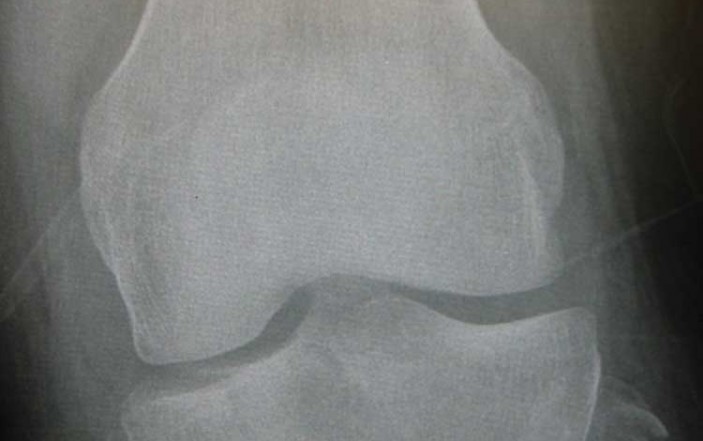
You are evaluating a multiple trauma patient who sustained a substantial head injury, was intubated and is non-communicado. On the secondary survey you note some left knee swelling. The extremity is neuro-vascularly intact, and the knee is stable to stress testing. There is an effusion present. Due to the head injury, you are transferring the patient to the referral center.
Initial portable X-ray of the knee is shown. As fate would have it, the hour is late and the radiologist is at home, all tucked-in and snug in her bed. You would like to give an accurate report to the receiving physician.
Do you see a fracture in the knee joint?
This one is easy if you know what to look for. On the AP portable view, you can see an effusion – a sign of either fracture or cartilage injury. There is also a subtle hint of fracture (see arrow). However, the cross-table view shows both the fracture and the fat-fluid level (lipo-hemarthrosis) extending into the joint. You wrap up the knee with a knee immobilizer as part of the patient packaging, and send them on their merry way to the trauma center.
25%-50% of tibial plateau fractures result from vehicle fender vs. pedestrian blunt trauma.
Tibial plateau fractures are the 2nd most common type of knee fracture (after patellar fractures).
The lateral tibial plateau is involved in 75% to 90% of cases.
22% of tibial plateau fractures are subtle with minimal displacement – if suspected CT with coronal and sagittal reconstructions can rule-in or rule-out the diagnosis (although this would not be a priority in a head-injured patient at a non-Level I trauma center).
In the acute setting CT appears equivalent to MRI to detect ligament injuries associated with tibial plateau fractures.
1.5% to 4.6% of patients admitted with lower extremity injuries have an associated vascular injury/compromise and displaced medial tibial plateau fractures are one risk factor.
Dr. Dallara practices Emergency Medicine in Virginia and North Carolina, and directs the Emergency Medicine PREP Course. www.emprepcourse.com



